Disclosure: This article contains affiliate links. We may earn a commission from purchases at no extra cost to you, which helps our travel content.
Standing at the edge of Marina Grande, watching the morning light dance across the Tyrrhenian Sea, I couldn't help but reflect on how different this visit to Capri was from my business trips to mainland Italy. The island exists in its own microclimate of luxury and tradition, where the culinary landscape tells a story as dramatic as the limestone cliffs that rise from its azure waters. Having spent years documenting food traditions across Southern Europe, I've found that Capri offers something uniquely authentic beneath its glossy, tourist-friendly veneer—a culinary heritage that rewards those willing to step away from the Piazzetta crowds.
Beyond Limoncello: The Citrus Heritage of Capri
While most visitors return from Capri with factory-produced limoncello, the island's relationship with citrus runs far deeper than souvenir shops suggest. My journey began with an early morning visit to a family-run lemon grove near Anacapri, where I was greeted by Signor Paolo, a third-generation agronomist whose hands bear the weathered evidence of decades tending to Capri's famous femminello lemons.
These aren't ordinary lemons—they're enormous, fragrant fruits with thick, wrinkled rinds that Paolo insists contain 'the soul of the island.' Unlike the perfectly uniform citrus found in supermarkets, these misshapen giants are cultivated under traditional pagliarelle (straw mats) that protect them from wind and regulate temperature.
During the hands-on harvesting workshop, Paolo demonstrated the proper cutting technique using his harvest scissors, which he called 'an extension of the hand.' These precision tools make clean cuts without damaging the delicate branches—a worthwhile investment if you're serious about home gardening or foraging.
The morning concluded with a tasting of authentic limoncello made on-site, alongside lemon-infused olive oil and citron marmalade that bore no resemblance to the commercial versions sold downtown. The experience transformed my understanding of how deeply Capri's cuisine is rooted in this singular fruit.
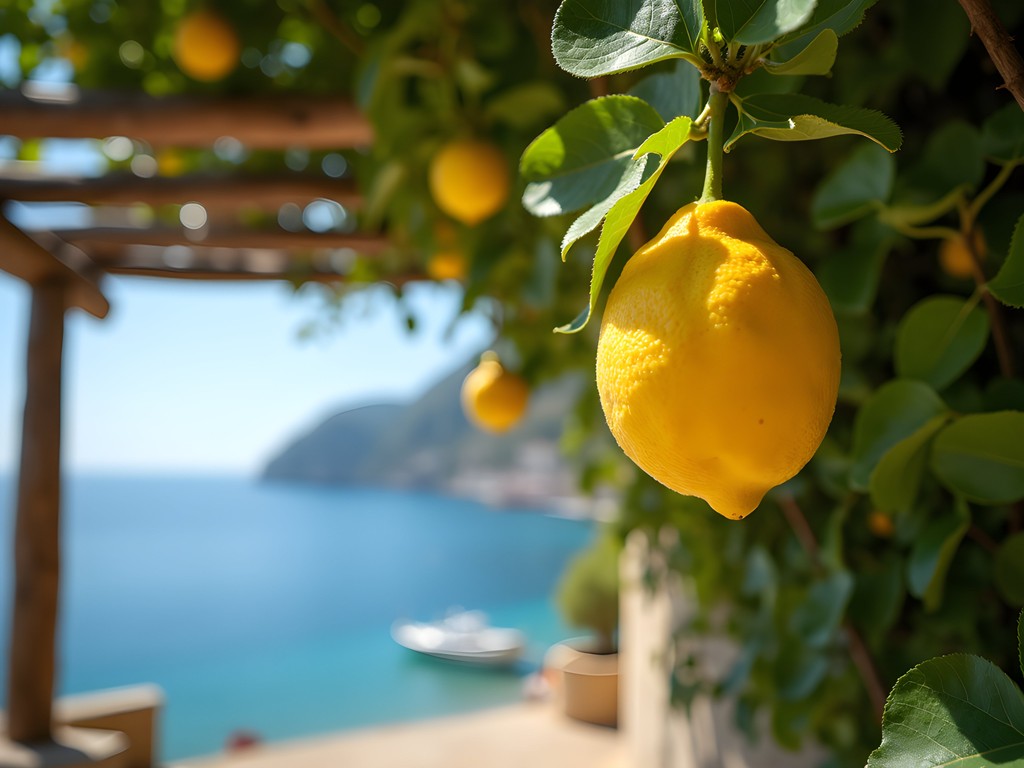
💡 Pro Tips
- Book lemon grove tours at least 2 weeks in advance as they limit daily visitors
- Bring cash for purchasing farm products as many small producers don't accept cards
- The best lemon harvests happen from February through early June
The Fishermen's Breakfast: Capri's Maritime Culinary Ritual
One cannot understand Capri's cuisine without acknowledging its intimate relationship with the sea. To experience this connection authentically, I arranged to join a local fisherman, Antonio, for what he called 'la colazione dei pescatori'—the fisherman's breakfast.
We departed from Marina Piccola an hour before dawn, the harbor still cloaked in darkness save for a few swaying lanterns. Antonio's weathered wooden gozzo boat sliced through calm waters as he pointed out fishing grounds his family has worked for generations. Using traditional techniques, we caught a modest haul of occhiate (saddled bream) and totani (flying squid).
As sunrise painted the Faraglioni rocks in golden hues, Antonio anchored in a secluded cove and produced a compact portable gas stove from below deck. 'The secret to fisherman's breakfast,' he explained, 'is cooking your catch immediately.' This ultralight stove proves remarkably effective even in sea breezes—I've since purchased one for my own culinary adventures.
Within minutes, Antonio prepared a simple yet transcendent dish: freshly caught fish sizzling in local olive oil with wild capers, cherry tomatoes, and a handful of sea fennel gathered from nearby rocks. We ate directly from the pan, tearing chunks of crusty bread to soak up the flavorful oil, while Antonio shared stories of Capri's changing relationship with fishing over decades.
This meal—devoid of pretension yet impossibly fresh—revealed the foundation of Caprese cuisine in a way no restaurant experience could match.

💡 Pro Tips
- Arrange fishing experiences through your hotel concierge rather than tourist offices for more authentic connections
- Bring motion sickness remedies even if you don't normally need them—the small boats can be quite rocky
- Wear layers and non-slip shoes for early morning fishing excursions
Kitchen Gardens and Culinary Workshops: Hands-On Caprese Cuisine
For those seeking to bring Capri's flavors home, I recommend the immersive cooking workshops at Villa Margherita, a restored 19th-century estate where the kitchen garden provides ingredients for daily classes. My grandfather and I discovered similar workshops years ago when exploring Europe, and they remain my preferred method for understanding local food culture.
The experience begins with a garden tour led by Chef Isabella, whose family has preserved traditional Caprese recipes for generations. Students harvest ingredients directly from meticulously maintained beds of San Marzano tomatoes, purple artichokes, and aromatic herbs. Isabella insists on using a quality herb scissors for harvesting—a tool I now keep in my own kitchen for its precision in cutting delicate herbs without bruising.
The workshop focuses on three quintessential dishes: authentic insalata caprese (using buffalo mozzarella delivered daily from Campania), ravioli capresi (filled with caciotta cheese and marjoram), and torta caprese (the island's famous flourless chocolate-almond cake). What distinguishes this experience is Isabella's emphasis on technique rather than rigid recipes—teaching participants to understand the principles behind each dish.
The most valuable lesson came during pasta making, where Isabella demonstrated how to test dough elasticity by stretching it toward a window to check for translucency—the 'window pane test' that reveals proper gluten development. These fundamental techniques transcend specific recipes and have improved my cooking far beyond Italian cuisine.

💡 Pro Tips
- Book the morning class to enjoy the garden before the midday heat becomes intense
- Request vegetarian options at least 48 hours in advance if needed
- Bring a small notebook rather than relying on your phone for recipe notes—flour and water are digital devices' enemies
From Humble to Haute: Capri's Culinary Spectrum
Capri's dining scene spans from humble family trattorias to Michelin-starred establishments, but the most memorable experiences often lie at unexpected intersections of tradition and innovation.
For an authentic lunch without pretension, I followed a local shopkeeper's recommendation to Da Gelsomina in Anacapri. Reached via a short shuttle ride from the main square, this family-run establishment serves what many locals consider the island's finest coniglio all'ischitana (rabbit stewed with tomatoes, garlic, and white wine)—a dish that reveals Capri's historical connection to neighboring Ischia. Their house wine, produced from pergola-grown grapes on the property, perfectly complements the rustic fare.
For those seeking elevated experiences, Il Riccio offers sophisticated seafood at the edge of the Blue Grotto. While certainly upscale, what distinguishes this establishment is its 'Temptation Room'—an entire chamber dedicated to traditional Caprese desserts where guests are invited to sample freely. The restaurant's wine aerator service enhances their extensive regional wine offerings, particularly the local white Falanghina that pairs beautifully with their crudo. I've since added this aerator to my travel kit for business trips, as it dramatically improves even modest hotel room wine experiences.
Perhaps most memorable was discovering Aurora, Capri's oldest restaurant (established 1899), where Chef Franco maintains a delicate balance between tradition and modernity. Their signature dish—pizza all'acqua, made with seawater rather than salt—offers a fascinating glimpse into how island isolation historically shaped cooking techniques through resource constraints.

💡 Pro Tips
- Make dinner reservations at least a week in advance for fine dining establishments during high season
- Request tables away from the entrance at Aurora to enjoy their garden atmosphere
- Most upscale restaurants offer lunch prix fixe menus that provide excellent value compared to dinner service
The Liquid Treasures: Wine and Spirits of Capri
Beyond food, Capri offers distinctive liquid pleasures that reflect its unique terroir. While the island's wine production is limited by its small size, what it produces demonstrates remarkable character.
I arranged a private tasting at Scala Fenicia, Capri's only commercial winery, where ancient stone terraces cascade down Monte Solaro. Owner Luigi explained how the island's limestone soil imparts a distinctive minerality to their white wines, particularly their Greco and Falanghina varietals. Most fascinating was learning how their vineyard maintenance requires specialized pruning tools designed for terraced agriculture—precision instruments that allow for maintenance without damaging the ancient stone walls.
Beyond wine and the ubiquitous limoncello, Capri offers more obscure liquid treasures. At the family-run Carthusia perfumery, I discovered that their fragrance production techniques mirror those used in traditional liqueur making. This connection led me to a small producer of rucolino—a digestif made from wild arugula that grows along Capri's rocky coastline. With a complex pepperiness balanced by subtle sweetness, it offers a far more interesting conclusion to a meal than commercial limoncello.
Perhaps most surprising was discovering Capri's emerging craft cocktail scene at Jacky Bar, where mixologist Marco incorporates island botanicals into contemporary drinks. His signature creation—the Tiberio, named for the Roman emperor who once ruled from Capri—combines local gin with fennel-infused vermouth and sea fennel tincture, garnished with preserved lemon. The result perfectly encapsulates Capri's culinary identity: rooted in history yet unafraid of innovation.
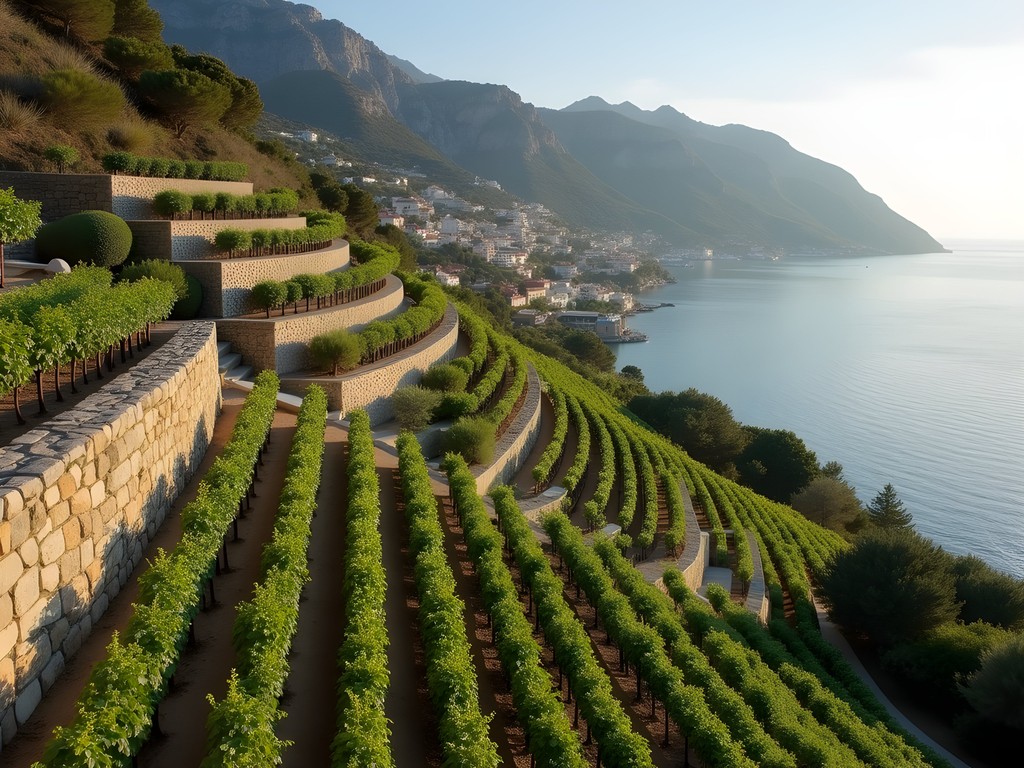
💡 Pro Tips
- Schedule winery visits for mornings when your palate is freshest and the terraces are cooler
- Purchase Carthusia fragrances at their factory location rather than harbor shops for better pricing
- Ask bartenders for recommendations featuring local ingredients rather than ordering standard cocktails
Final Thoughts
As my weekend in Capri drew to a close, I found myself sitting at a small café in the Piazzetta, observing the parade of day-trippers rushing to catch the last ferries. Their Capri experience—limited to quick photos at scenic viewpoints and hurried meals at tourist establishments—seemed worlds apart from the culinary journey I'd undertaken.
Capri's true gastronomic identity exists in the tension between its humble fishing traditions and its evolution into a luxury destination. The island rewards those who approach it with curiosity and respect for its culinary heritage. While a weekend provides just enough time to scratch the surface, it's sufficient to understand why this small limestone outcrop has captivated visitors for millennia.
As business travelers, we often find ourselves in extraordinary places with limited time. The difference between a forgettable trip and a transformative one lies in how we approach those precious free hours. In Capri, as elsewhere, the key is to seek authentic connections through food—the universal language that reveals a destination's soul more honestly than any guidebook ever could. Whether you have a weekend or merely an afternoon, Capri's kitchens, vineyards, and fishing boats offer windows into a world of tradition and innovation that transcends its postcard perfection.
✨ Key Takeaways
- Book culinary experiences in advance, especially during high season (May-September)
- Venture beyond Marina Grande and the Piazzetta to discover authentic Caprese cuisine
- Connect with local producers and fishermen for experiences that reveal the island's true culinary heritage
📋 Practical Information
Best Time to Visit
May-June or September (to avoid peak crowds while enjoying warm weather)
Budget Estimate
$1,000-1,500 per day including luxury accommodation and dining
Recommended Duration
2-3 days minimum
Difficulty Level
Easy

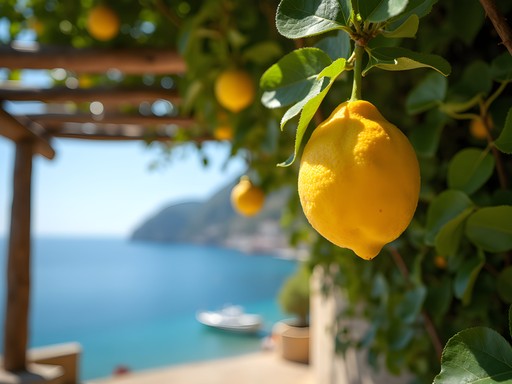
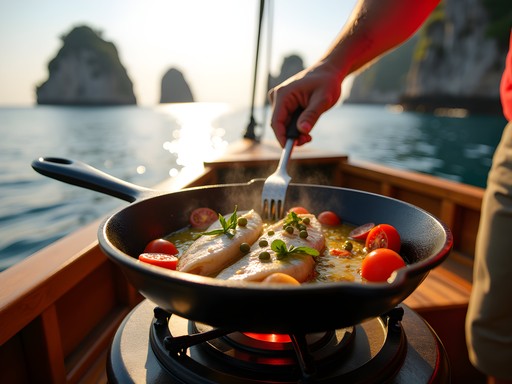
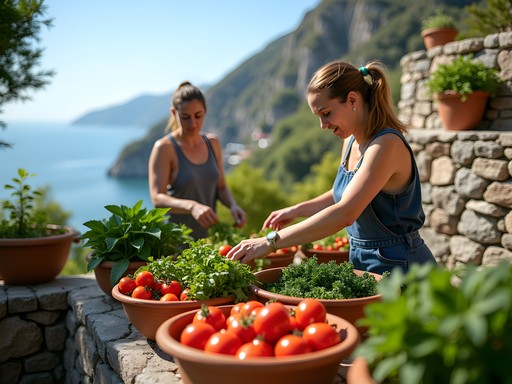
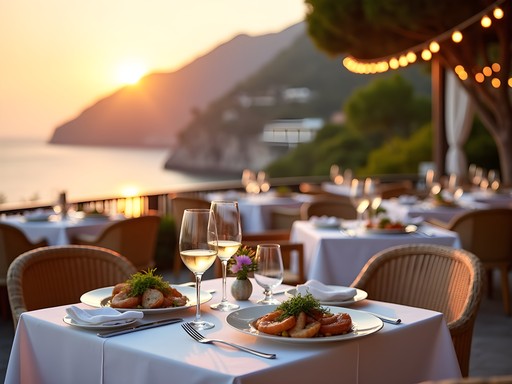
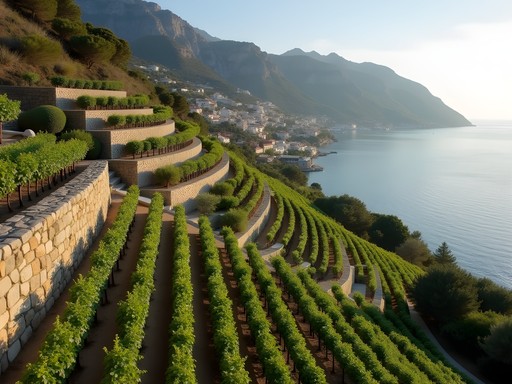






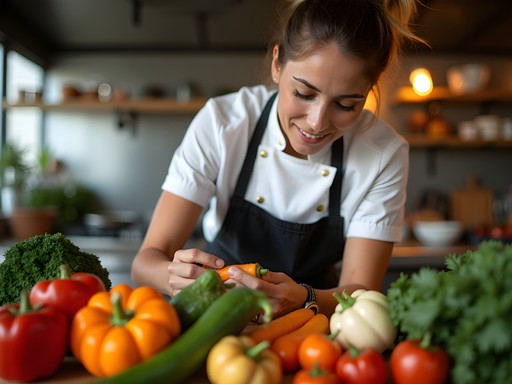

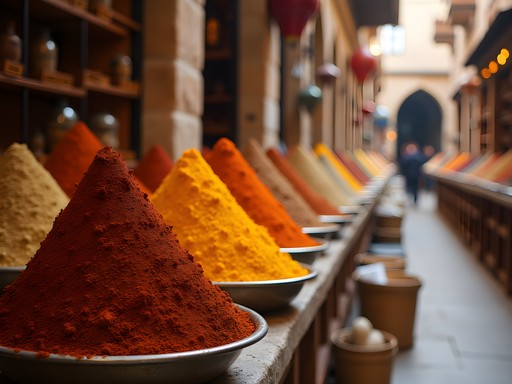
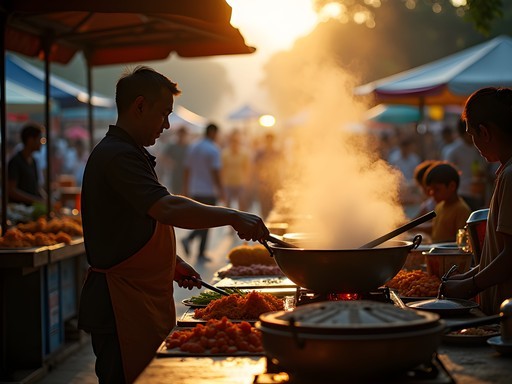
Comments
SoloFemTraveler
Just booked my trip for next April! Can't wait to try that fishermen's breakfast!
MediterraneanFoodie
If you're visiting Capri and love cooking, I highly recommend bringing back some authentic ingredients. I found this amazing little shop near the Gardens of Augustus that sells proper Capri-grown lemons and house-made limoncello. They also ship internationally! I brought back their lemon-infused olive oil and it makes every salad taste like summer in Italy. Just make sure you have room in your luggage - I had to use my packing cubes to fit everything I bought!
SoloTravelerJen
Do you remember the name of that shop? Heading there in October!
MediterraneanFoodie
It's called Carthusia Gourmet! Right near the perfumery with the same name. The owner Giulia is super knowledgeable about all their products.
TravelWithKids
Going there with two teenagers next spring - are those culinary workshops you mentioned suitable for kids? They love cooking but have short attention spans!
HaydenL
The workshop at Da Paolino was very teen-friendly! They break it into 30-minute segments and everyone gets hands-on with their own station. My friend's 14-year-old had a blast making lemon pasta there.
TravelWithKids
Perfect, thanks! Will definitely check it out.
TravelWithPups
That shot of the lemon grove with the sea in the background is incredible! Perfect capture of Capri's essence.
BeachDreamer
Those lemon photos are making my mouth water! 🍋 Capri just shot to the top of my bucket list!
Frank Garcia
Excellent breakdown of Capri's culinary landscape! I'd add that the island's microclimates create fascinating variations in the same dishes depending on which side you're on. When I visited last spring, I tracked the differences in ravioli capresi from four corners of the island - the northeastern versions used a more aggressive mint profile while southwestern preparations leaned heavier on aged pecorino. I'd recommend anyone visiting to try the same dish in different villages - it's like a culinary treasure hunt. Also, for those wanting to dive deeper, I found this cookbook incredibly helpful for understanding the historical context of these dishes.
IslandHopper22
That ravioli comparison is such a cool idea! Did you have any transportation tips for getting between villages efficiently? We'll only have 3 days there.
Frank Garcia
The local buses are surprisingly efficient! Buy a multi-day pass at the Marina Grande ticket office - way cheaper than taxis. For Anacapri specifically, catch the first bus up (around 8:15am) to beat the crowds. The schedule changes seasonally though.
HaydenL
Frank's right about those buses! I'd add that if you're staying overnight, the evening schedule thins out dramatically after 8pm, so plan accordingly. And thanks for that cookbook recommendation - just ordered it!
coffeephotographer
Your descriptions of those lemon-infused dishes have me drooling! Visited Capri last summer and completely missed that fishermen's breakfast ritual. Guess I need to go back! Did you find the restaurants in Marina Grande more authentic than those in Anacapri? I felt like the further from the main square, the better (and cheaper) the food got.
HaydenL
Absolutely! Marina Grande had this wonderful authenticity, especially early morning. There's a tiny place called Da Gennaro that doesn't even have a proper sign - just look for the blue door with fishing nets. Their morning catch fritto misto was incredible.
coffeephotographer
Writing that down for next time! How was the crowd situation when you visited? Thinking about going in May instead of peak summer.
HaydenL
May would be perfect! I went in early July and the day-trippers were overwhelming by noon. May gives you that gorgeous weather without the cruise ship crowds.
ItalyLover78
Going there next month! How difficult is it to get away from tourist trap restaurants?
Hayden Lawrence
It takes some effort but it's doable! My rule: avoid anywhere with menu boards showing photos of food. Look for places at least 2-3 streets away from the Piazzetta or Marina Grande. Also, eat when locals eat (1-3pm for lunch, after 8pm for dinner).
Douglas Bradley
Your piece beautifully captures the dichotomy of Capri's culinary scene - the authentic island traditions versus the high-end dining that caters to its jet-set visitors. I visited last spring and found that timing is everything. The shoulder seasons reveal a completely different gastronomic landscape compared to peak summer. I'd recommend readers try Aurora in Capri Town, where their pizza all'acqua (made with seawater) offers a fascinating twist on Neapolitan traditions. Also worth noting that many of the kitchen garden workshops require booking 3-4 weeks in advance, especially Michel'angelo's cooking classes. I documented the seasonal variations in produce availability in my Mediterranean micro-climates series - fascinating how the terraced gardens create such unique growing conditions on such a small island.
CaribbeanSunChaser
Is Aurora super expensive? Trying to balance a few nice meals with budget options for our trip.
Douglas Bradley
Aurora is definitely on the pricier side (€25-35 for mains), but their lunch menu is more reasonable. For budget options, try the small family-run spots in Anacapri like Materita or grab panini from Buonocore Bakery and picnic at Villa Lysis.
Hayden Lawrence
Great recommendations, Douglas! I'd add that Le Grottelle near the Natural Arch offers incredible value with spectacular views. Their seafood antipasti platter is enough for two and costs about €25.
nomaddiver1449
Those morning fishermen breakfasts sound amazing! Did you try the squid ink pasta?
Hayden Lawrence
I did! The nero di seppia at Da Paolino was incredible - they make it fresh daily with the catch from Marina Grande.
nomaddiver1449
Adding that to my list! Going in September and can't wait to try the real local food instead of tourist stuff.
Venture X
Premium card with 2X miles, $300 travel credit, Priority Pass